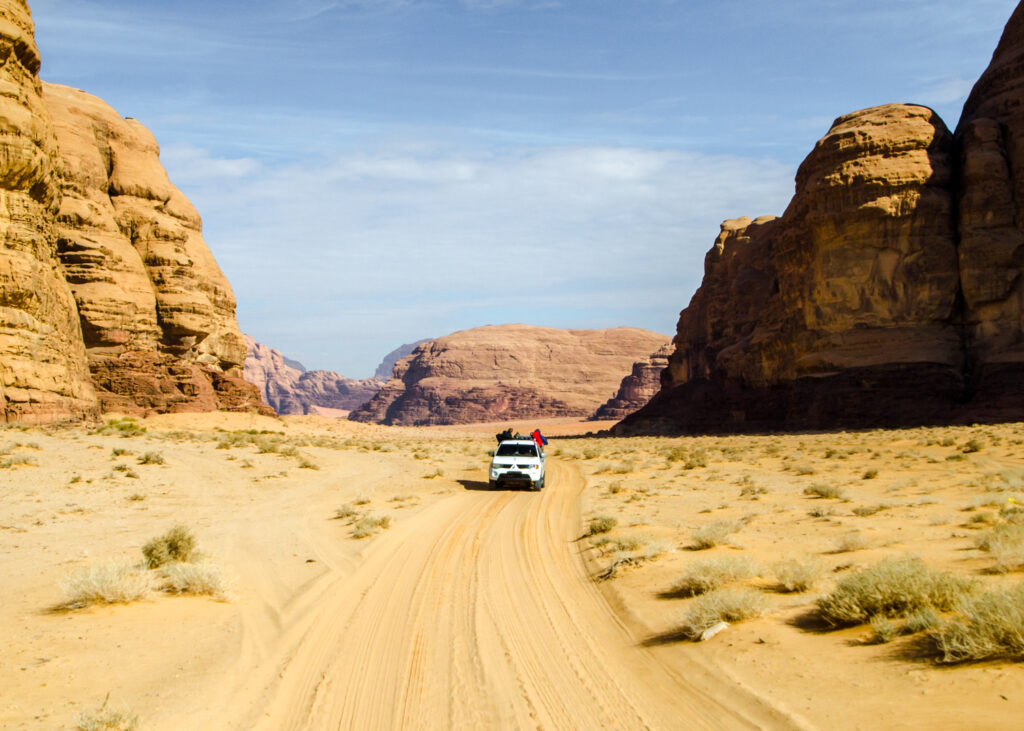Disclosure: This post contains affiliate links that I may earn a small commission from if you purchase something through them. This comes at no extra cost to you!
Wadi Rum is one of the most impressive and must-visit destinations in all of Jordan, where blends of Mars-like terrain, vibrant red sands, epic natural rock formations and towering sandstone mountains combine to form a simply other-worldly landscape.
Listed as a UNESCO World Heritage Site, the vast 720km² desert, also known as the ‘Valley of the Moon’, is situated in the south of the country and is home to the traditional Bedouin nomadic groups. Bedouins are Arab desert-dwellers who have survived here since the prehistoric times and are famed for their hospitality and ability to survive in harsh environments.
Spending 2 days living in a tent with Bedouin nomads in a remote part of the Wadi Rum desert is one of my most cherished and memorable travel experiences to date. This guide includes all essential information about visiting Wadi Rum along with details and stories about my own personal experience and the itinerary I followed.
Table of Contents...
Toggle
Useful information for Wadi Rum
- Country: Jordan
- Language: Arabic
- Population: 2,000 (Wadi Rum Village)
- Currency: 1 Jordanian Dinar (JOD) = £1.16/$1.40
- Visa info: Visitors from most nations can acquire a 2 month visa on arrival for Jordan at any of its international borders. The price for a visa is about $60 to be paid in cash unless you have a Jordan Pass, in which case the cost is free. For more visa information, click here.
- Sim cards: I always recommend picking up a local SIM card if you’re staying in a new country for a while as it means you don’t have to rely on WiFi and you can take Ubers or Grabs. The best service provider to use in Jordan is Orange, or alternatively get an eSIM before you arrive online here.
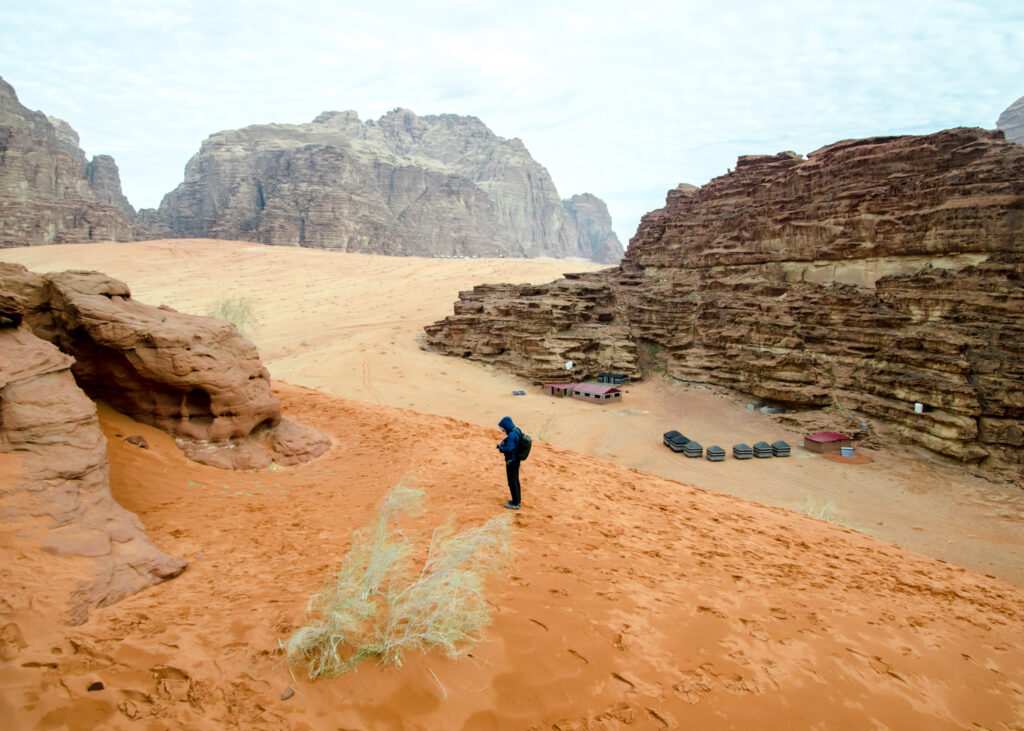
Where is Wadi Rum
Wadi Rum is located in the far south of Jordan, a small country in the Middle East.
It is 320km south of Jordan’s capital city Amman, 80km north of the country’s second largest city Aqaba and 114km from Wadi Musa (Petra).
Check out the location on the interactive map below
Getting there
- Rent a car
The most adventurous way to get around Jordan is to rent a car and drive yourself. This is a popular thing to do among travellers as the country is quite small, with most attractions separated only by sparse desert.
From experience, although a very safe country, I wouldn’t recommend driving in Amman as it can be quite hectic on the roads and people drive more aggressively than normal. I suggest renting your car from the airport whenever you are ready and heading south from there, avoiding the city.
I used RentalCarsCom to find a car and paid just £130 ($152) for 6 days. Find the perfect deal on RentalCarsCom here.
- Tourist buses
If you plan to visit Wadi Rum from Amman you can jump on a tourist bus and head to Wadi Musa or Aqaba and then transfer to Wadi Rum from there as there are no direct links to Wadi Rum from the capital.
A tourist bus to Wadi Musa with JETT costs about $26.
- Hire a taxi
Taxis are available from Wadi Musa or Aqaba to Wadi Rum and aren’t as expensive as you might imagine.
You can get a 2 hour taxi from Petra (Wadi Musa) to Wadi Rum for just 40-50 JOD which is pretty affordable, especially if you’re travelling in a group. From Aqaba it’s a 70km journey that will take about 1.5 hours.
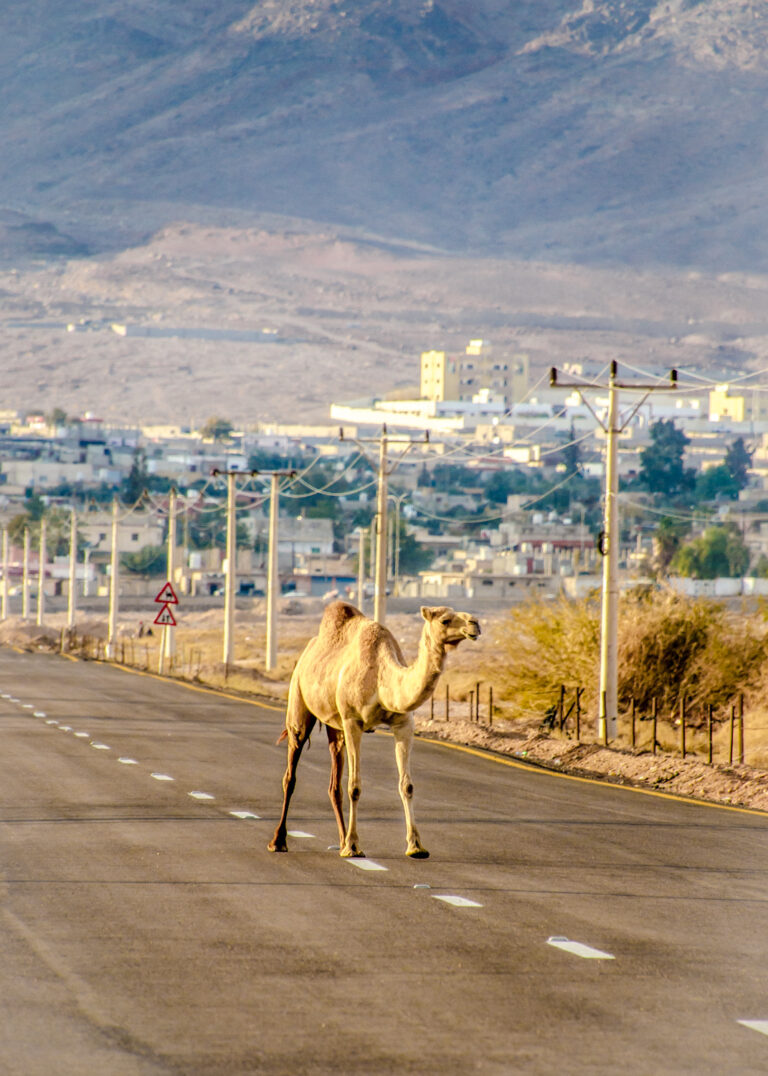
When to visit
The best times to visit Wadi Rum are the shoulder seasons of March to May or September to November as temperatures remain relatively high throughout day and night and there will be less tour groups around. This also means you’ll avoid the extreme heat of the summer months and the harsh winter nights that can come down as low as 0 degrees Celsius.
That’s right, even deserts can be freezing and I’m talking from experience when I say it gets ridiculously cold here in January – I had to sleep fully clothed and with 3 blankets in my Bedouin tent!
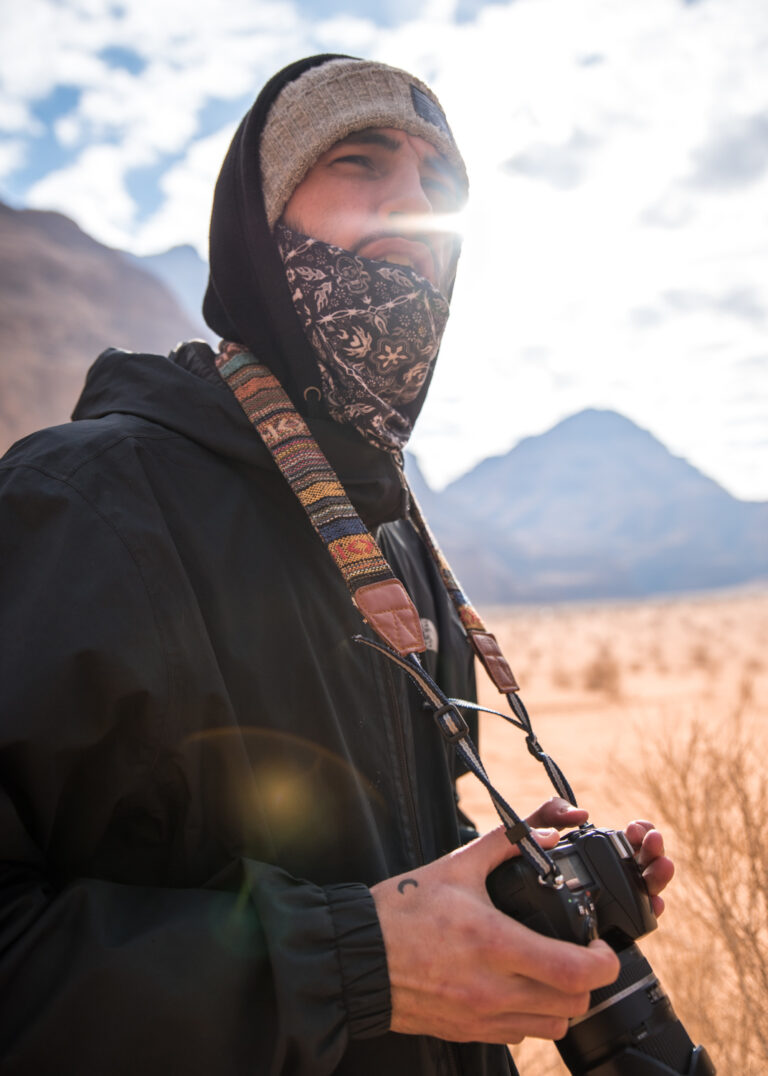
Why you need to get a Jordan Pass
Get a Jordan Pass before you arrive in Jordan – it’s a no-brainer!
Not only does a Jordan Pass include your entire visa cost, but it also includes over 40 attractions in the country and your entrance to Petra and Wadi Rum. You are pretty much guaranteed to save money by getting one, and almost every single visitor to the country does. I mean, you’ve pretty much paid it off before you’ve even left the airport!
There are 3 types of Jordan Pass; Wanderer (70 JOD), Explorer (75 JOD) and Expert (80 JOD).
I went for the Jordan Explorer Pass as it includes 2 days in Petra for only 5 JOD more than the Wanderer Pass which only includes one, which is the only real difference between the three. The expert includes 3 days in Petra.
Here are some of the potential fees you will avoid with a Jordan Pass:
- Tourist visa on arrival: 60 JOD
- Petra (2 days): 55 JOD
- Wadi Rum: 5 JOD
- Jerash Ancient City: 10 JOD
- Madaba Archeological Park: 3 JOD
- Karak Castle: 2 JOD
- Jordan Museum: 5 JOD
- Amman Citadel: 2 JOD
- Amman Amphitheatre: 2 JOD
As you can see, you will definitely save money during your trip with one of these! To learn more about the Jordan Pass, follow this link to the official website.
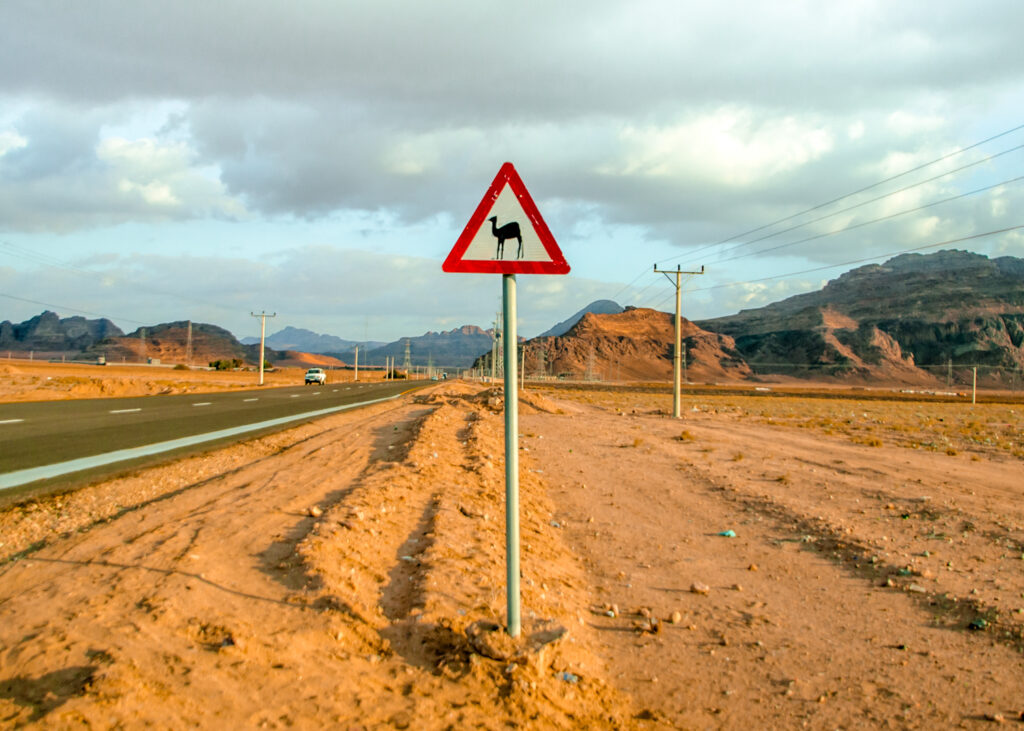
Arriving at Wadi Rum
Normally, you enter the Wadi Rum Visitor Centre and pay an entrance fee of 5 JOD per person (unless you have the aforementioned Jordan Pass) and from there the Wadi Rum Village is another 6km drive where you can find accommodation and tour opportunities.
It would be a good idea to have accommodation and a tour booked in advance to avoid any complications on arrival. Check out accommodation prices on Booking.com here.
My journey to Wadi Rum
Prior to driving 100km from Petra to Wadi Rum in our rental car, my partner managed to find someone who was willing to host us in the desert.
A man by the name of Ali offered us a full day tour of the Wadi Rum desert, completely free of charge, in exchange for photos. I couldn’t quite believe our luck, but when he insisted that we also spend the night in his family’s remote Bedouin camp to live the traditional, nomadic way of life to get the full experience, I just knew that this was going to be a special 24 hours.
As you will find out, Ali and his family turned out to be a bunch of absolute legends with god-tier hosting qualities and personalities to match. It wasn’t until much later that I discovered Ali’s tour to be is the #1 top rated Wadi Rum tour on TripAdvisor!
If you’re interested in visiting Wadi Rum and booking a tour, I strongly recommend using Ali as your host. Check out their official website here or read some of the amazing reviews on TripAdvisor: ‘The Second Time Wadi Rum Tour’.
Trust me, you won’t be disappointed!
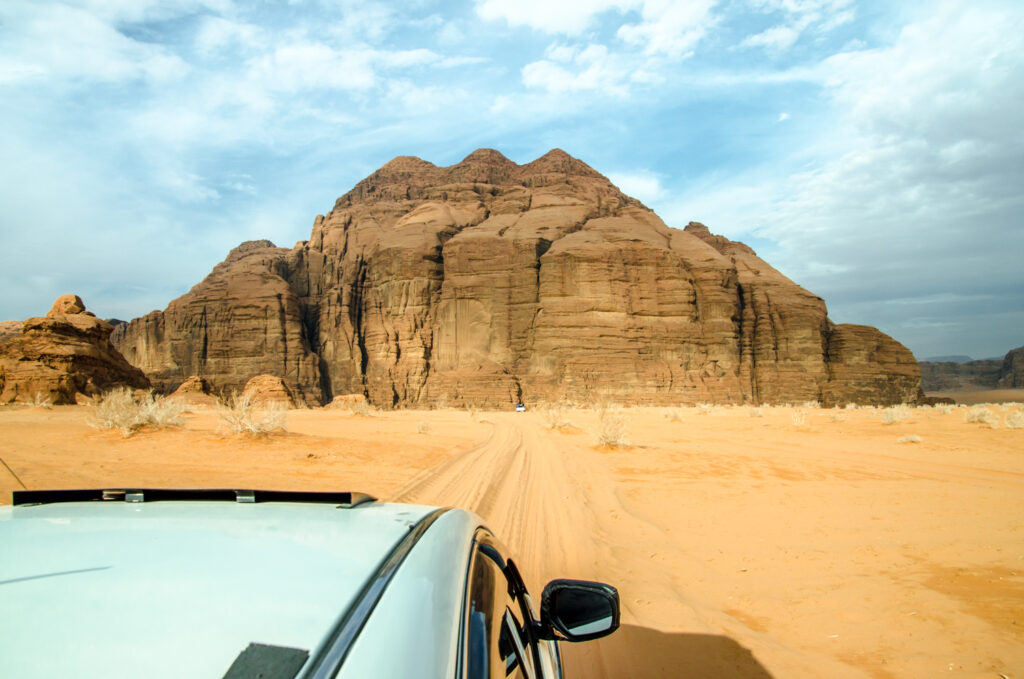
Day 1: An evening at camp
With my 648th chicken shawarma in hand, I left Petra in my rental car and drove 114km to Wadi Rum, trying hard to bottle my child-like excitement the entire way.
After the 2 hour drive past numerous wild camels and even an unexpected short strip of snow, we ditched the car near the Visitor Centre and connected with Ali through WhatsApp. He collected us in his 4×4 and off into the desert we went.
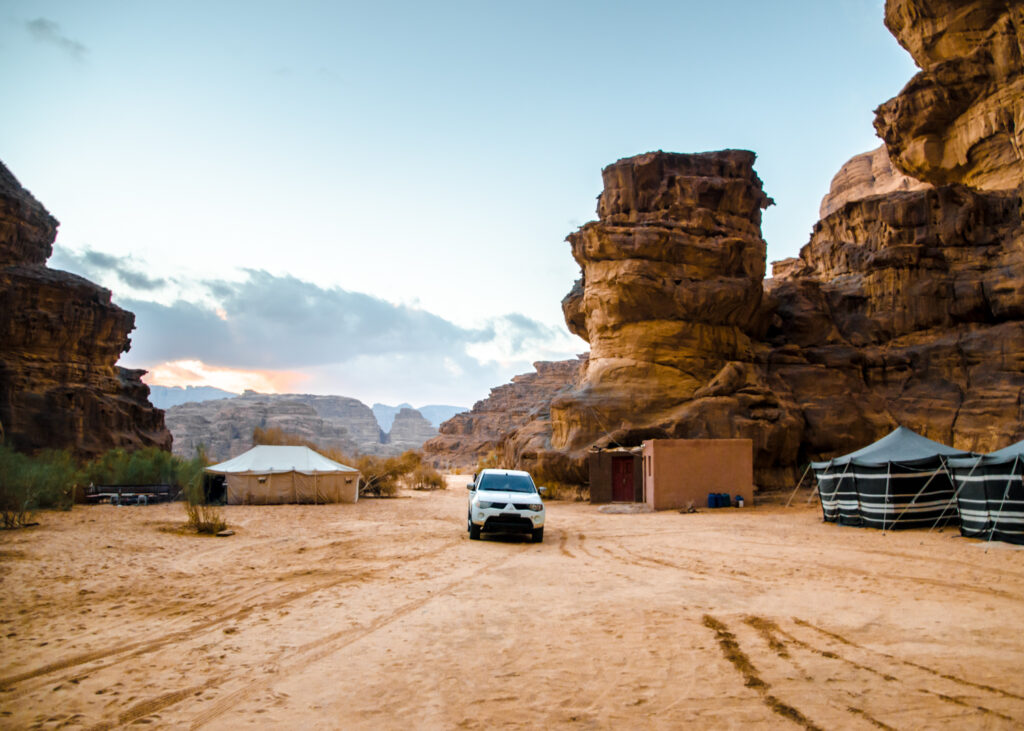
My camp was called Salma Camp, which you can view on Google Maps here.
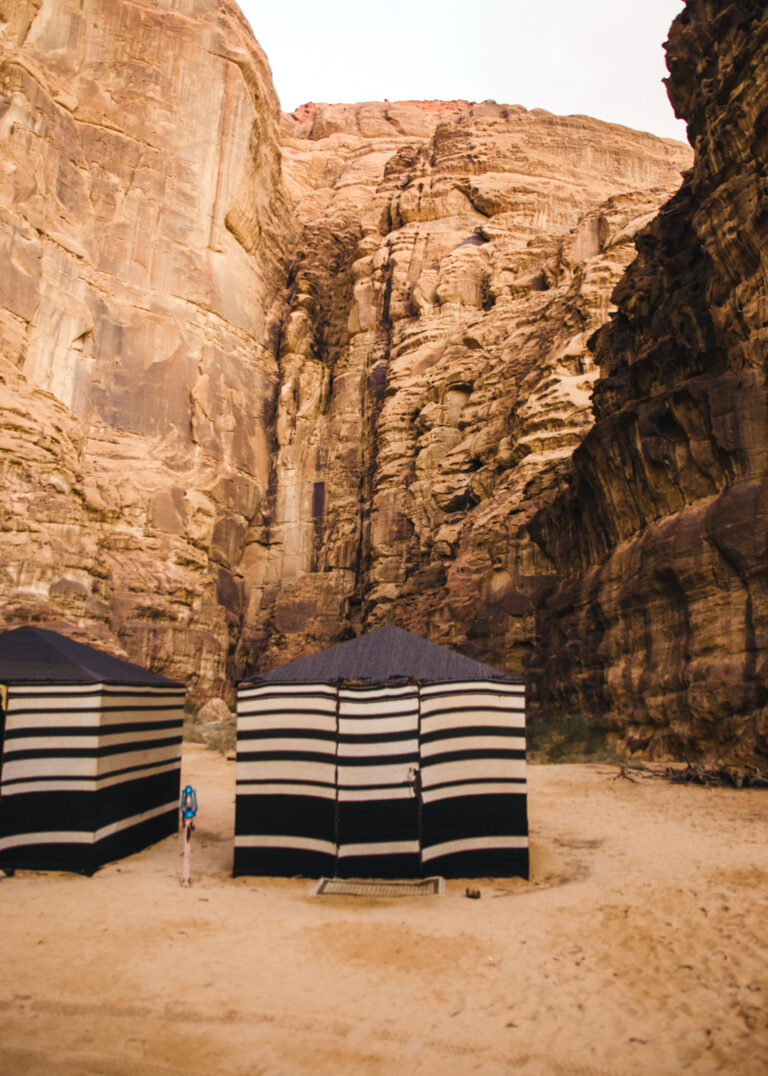
Traditional Bedouin dinner
At dinner, we started with noodle soup before Ali took us round the back of camp to a huge pile of sand, exclaiming “here’s your dinner!”.
The Bedouins call this method of cooking “Zarb”, which means hidden. They dig out a hole and create an underground oven before covering it with sand and returning to it hours later.
Ali grabbed a shovel and removed some sand which revealed a carpet below. Beneath the carpet was a lid, and from there he hauled out a double-tiered oven-tray-thing that was nearly a metre high and carried it back to the communal dinner tent.
On it were two dishes, one with chicken and one vegetarian option which were served with rice and pita bread. Fascinating!
Campfire
After dinner we sat around the fire and Ali spoke about Bedouin culture.
Stargazing
I left camp and let my eyes adjust to the darkness after staring into the fire for a few hours, and eventually I could see more stars than I’ve ever seen at once before. The whole nighttime scene is made even more epic by the shadows of the towering sandstone mountains that surround you.
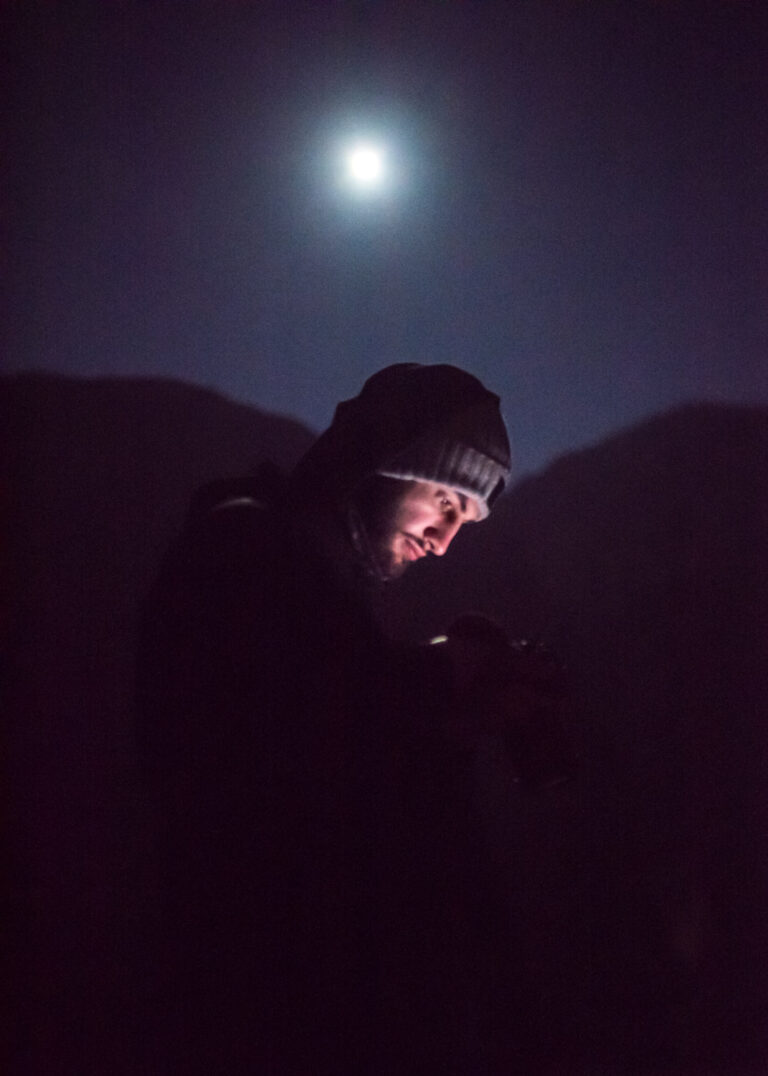
Day 2: The Second Time Tour
After a cold night in the tent (which is a huge understatement) it was time for a Bedouin style breakfast at 7:30am. Ali’s brother and friends served up a huge feast of pita bread and hummus, tea and coffee, olive salad, Jordanian omelette and some tomato and cucumber.
By 8:30am we were on the back of a 4×4 and the Wadi Rum adventure properly began!
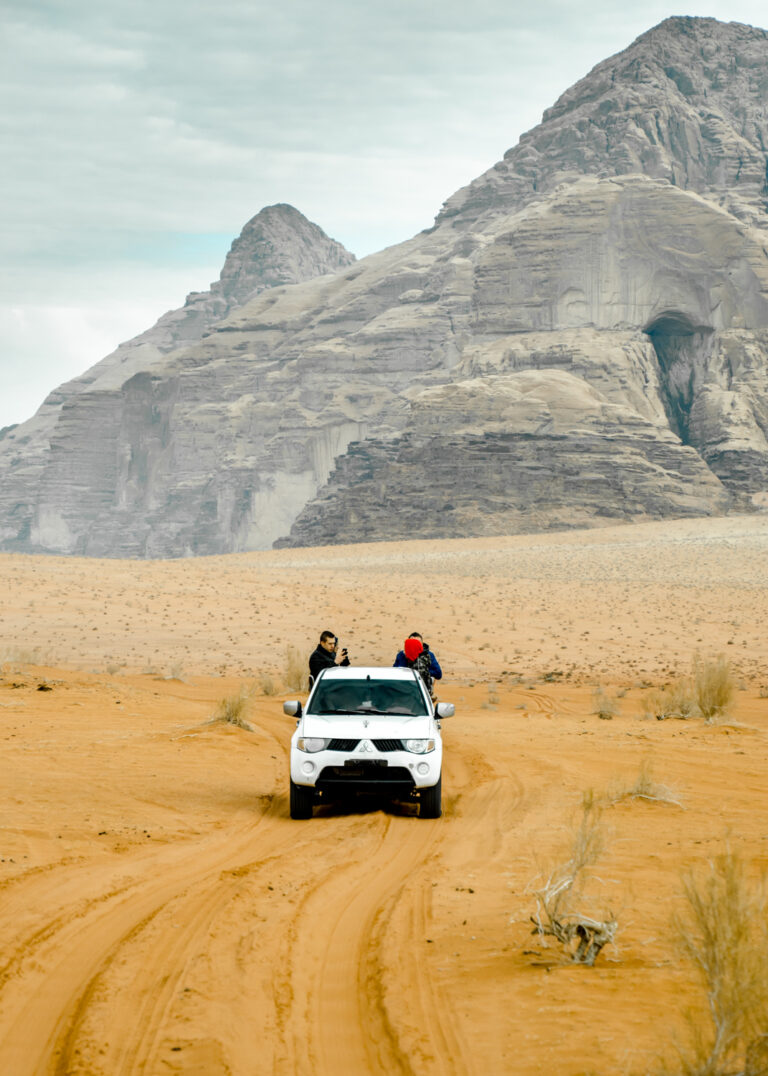
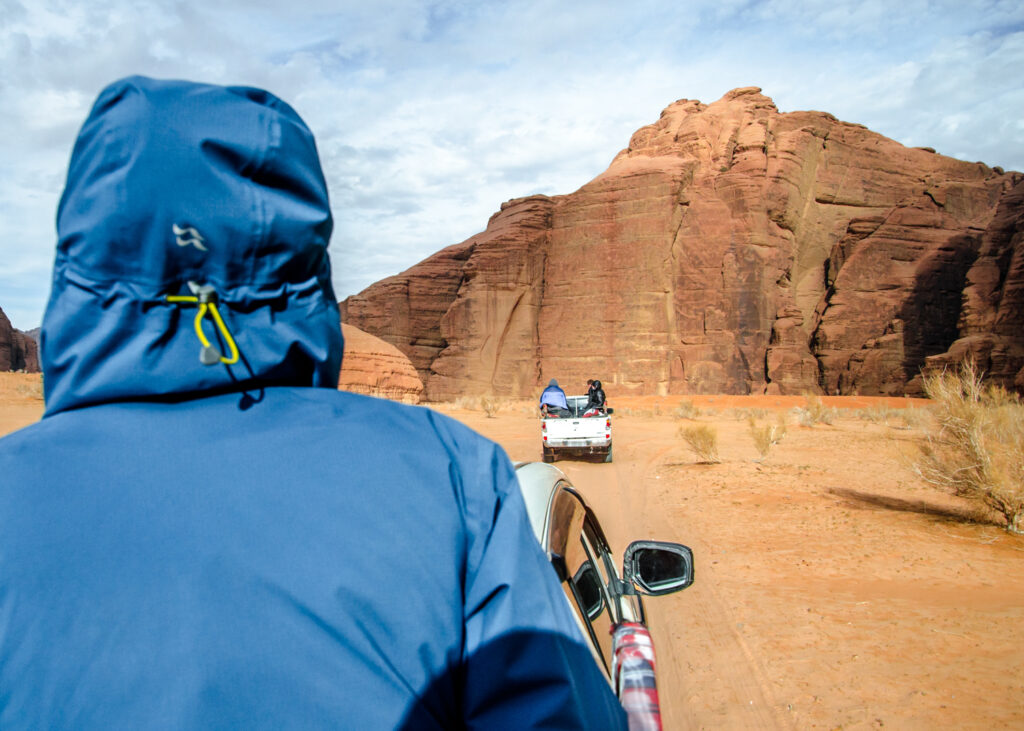
Ancient rock inscriptions
One of the reasons that Wadi Rum reached UNESCO status was for the importance and abundance of its ancient inscriptions.
There are around 25,000 petroglyphs (carvings) and 20,000 inscriptions scattered around the desert, suggesting human life has existed here for over 12,000 years – crazy stuff!
There are many places you could be taken to to see some inscriptions, but I saw some of camels, humans and letters not far from Salma Camp.
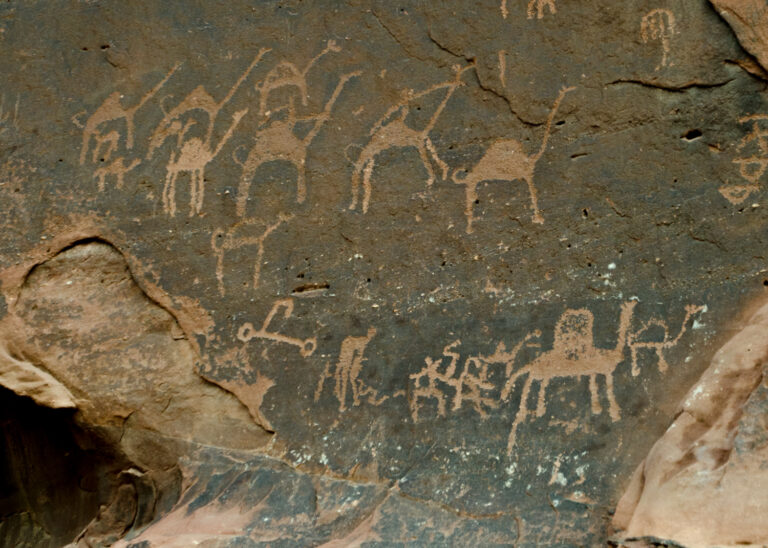
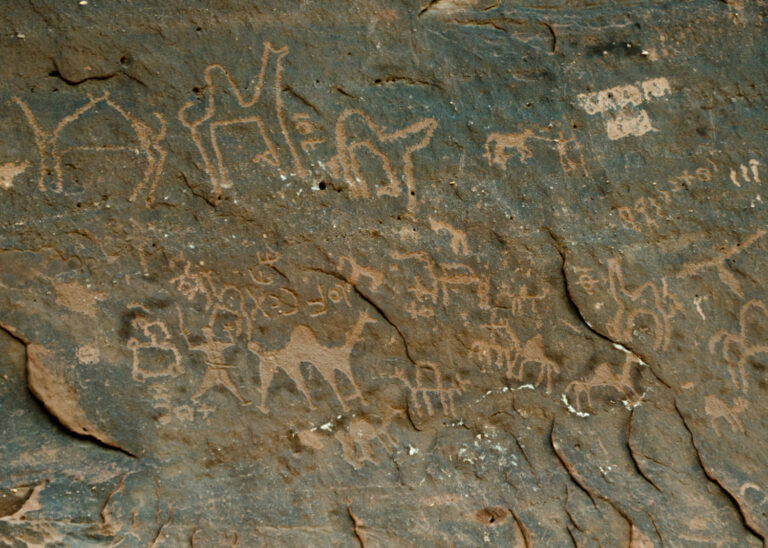
Laurence of Arabia House
Truth be told, the house is nothing particularly special. It’s the view you stop for!
Supposedly the actual Lawrence of Arabia stayed at this house before, but these days it is little more than a ruin with a couple of small stores nearby.
The sprawling desert views here are some of the best I saw in Wadi Rum and there are some awesome vantage points nearby, surrounded by hundreds of little rock piles, with scenes of rock formations and beautifully eroded mountains for tens of miles.
Scramble up the rocks and soak it all up!
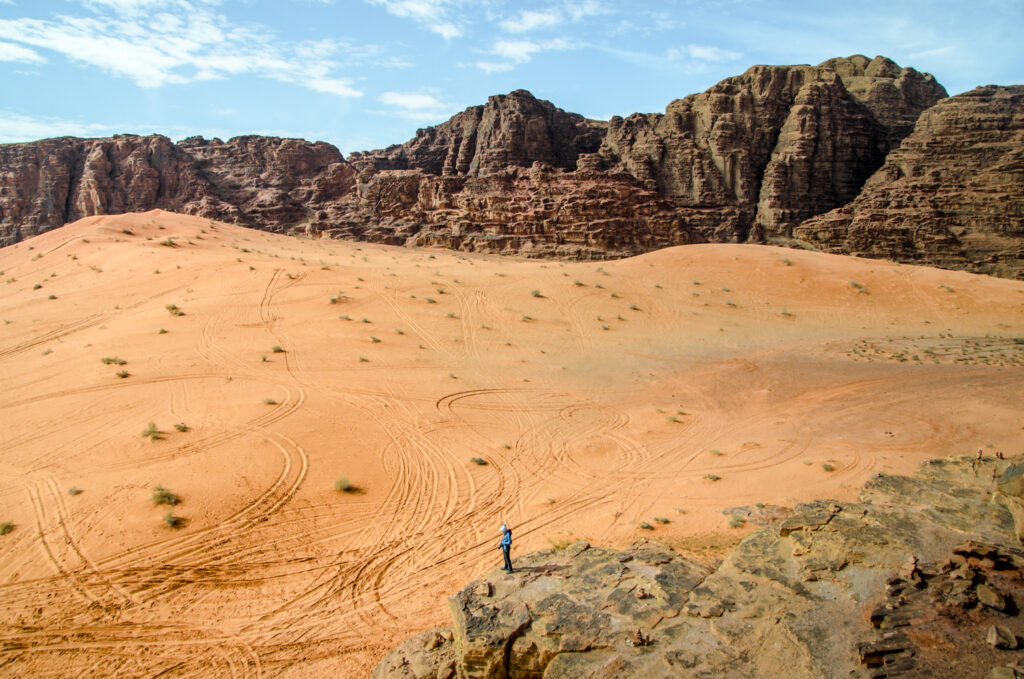
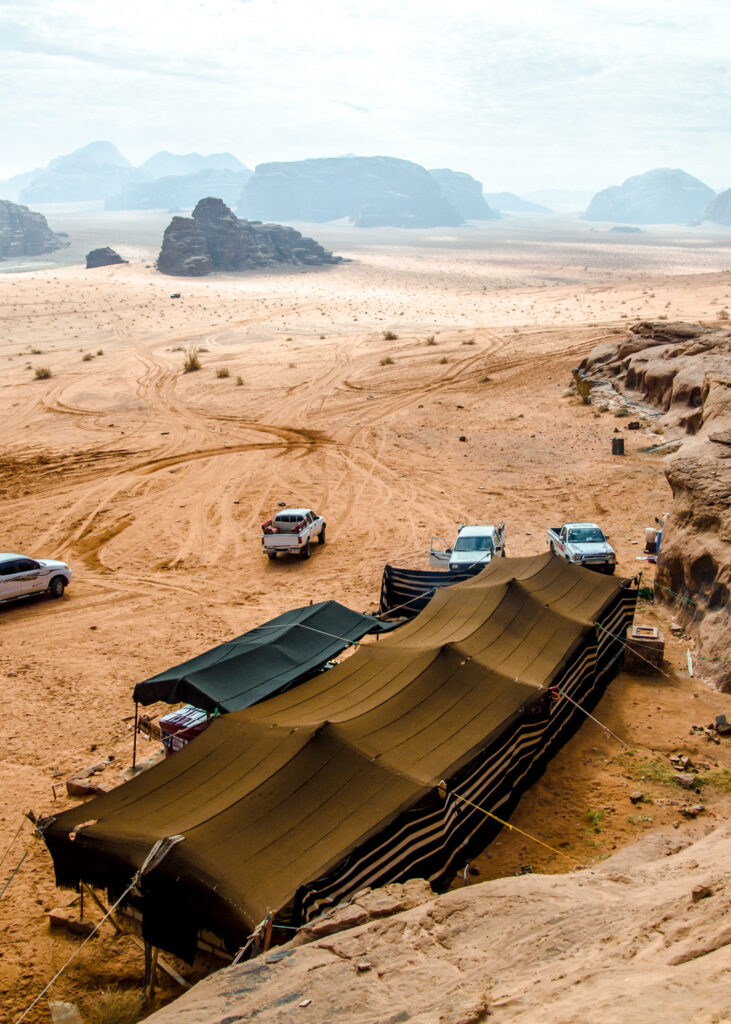
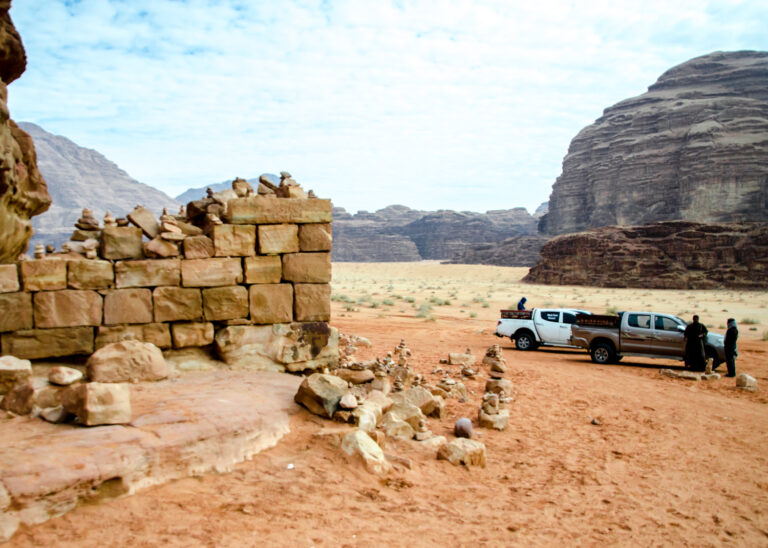
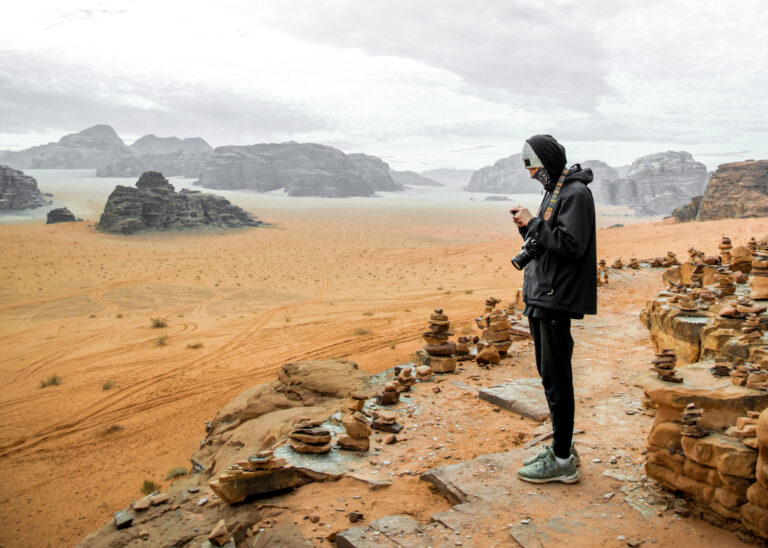
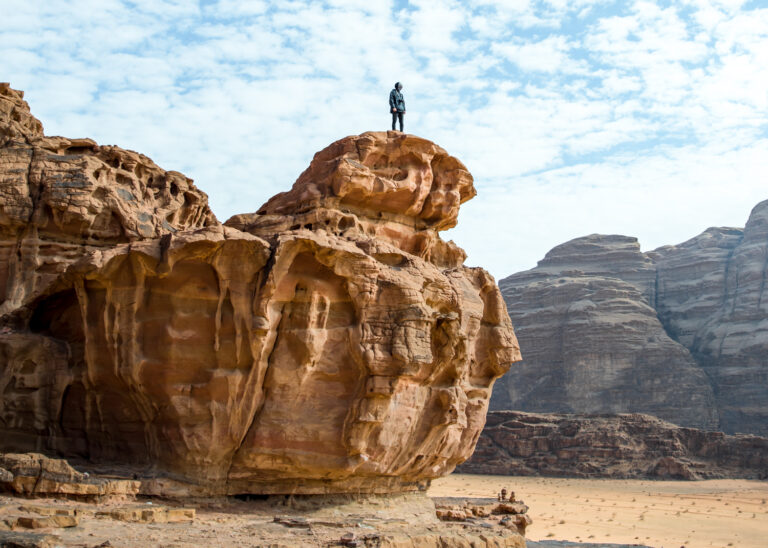
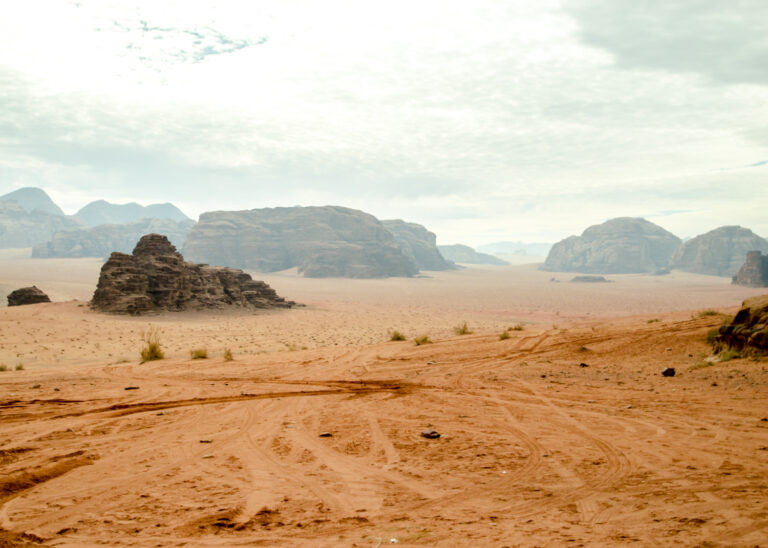
Um Fruth Natural Bridge
Um Fruth Rock Bridge is a naturally formed rock arch that you can climb up to take a seriously cool photo on top of the elevated walkway.
This rocky arch rises 15m above ground and is one of the most photographed natural bridges in Wadi Rum (yup, there’s many others!).
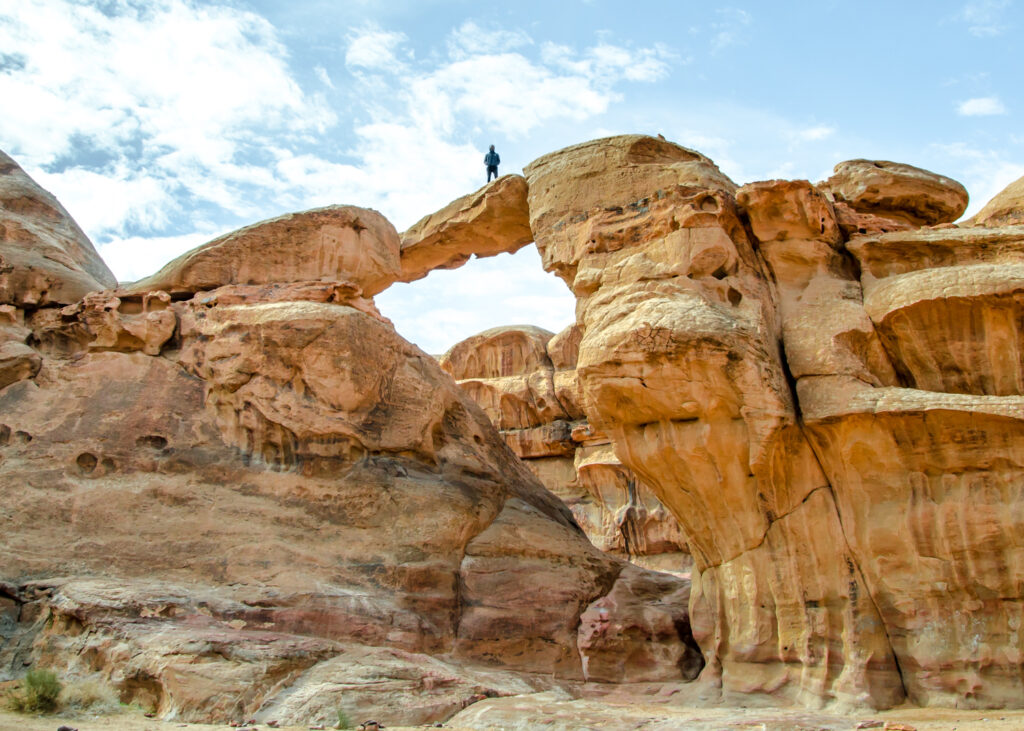
After a short scramble up the hillside that is probably not suitable for children or elderly people, you’re able to walk across the bridge and admire the superb views from up high. There are no ropes to help ascend the hillside but some rock-cut grooves will help guide the way. I found that it’s coming down that’s a bit more of a struggle, and the best technique is just to bum-shuffle to avoid slipping!
Note: it is not actually as sketchy as it looks from below and in fact the platform is very wide and safe.
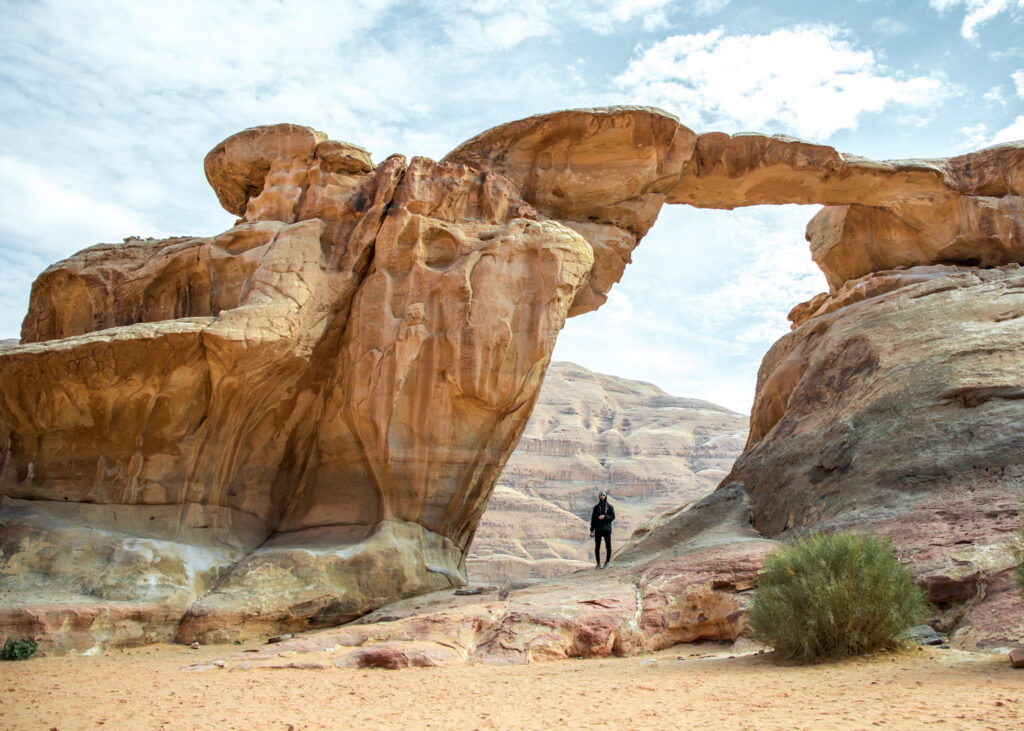
Siq Trail (Burrah Canyon)
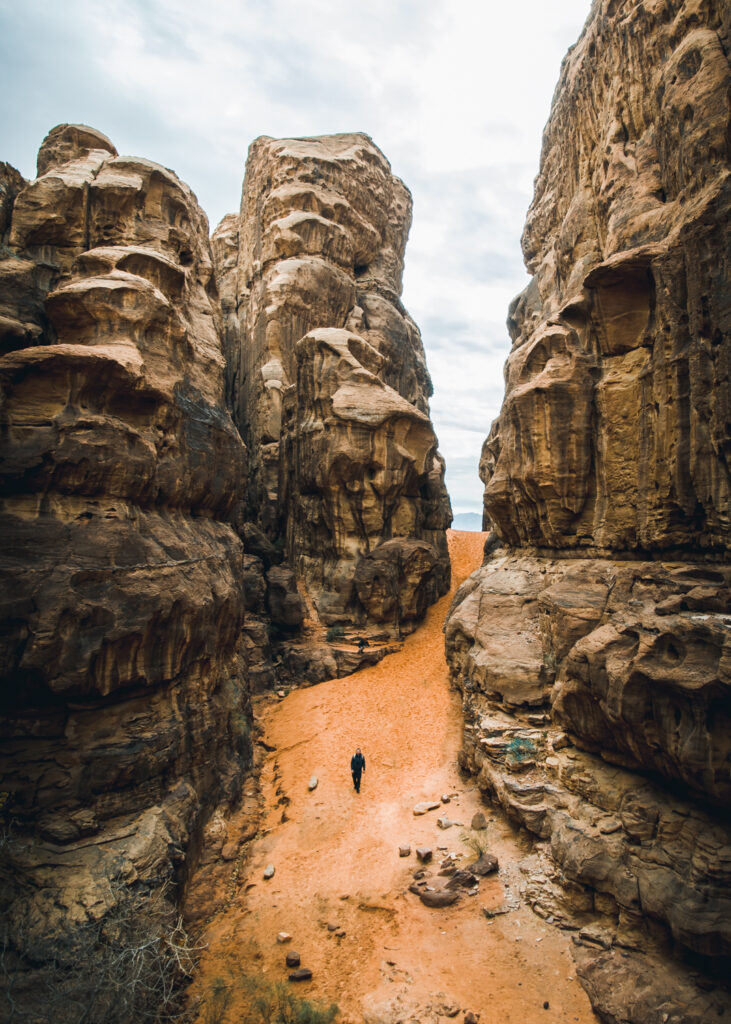
This winding trail takes you on a short walk through a towering and narrow Siq, meaning canyon, before opening up at the other side.
This is not a very well-known Siq in Wadi Rum, so you’ll probably have the whole place to yourself, like I did. My driver dropped the group at the start and collected us at the other side around 30 minutes later.
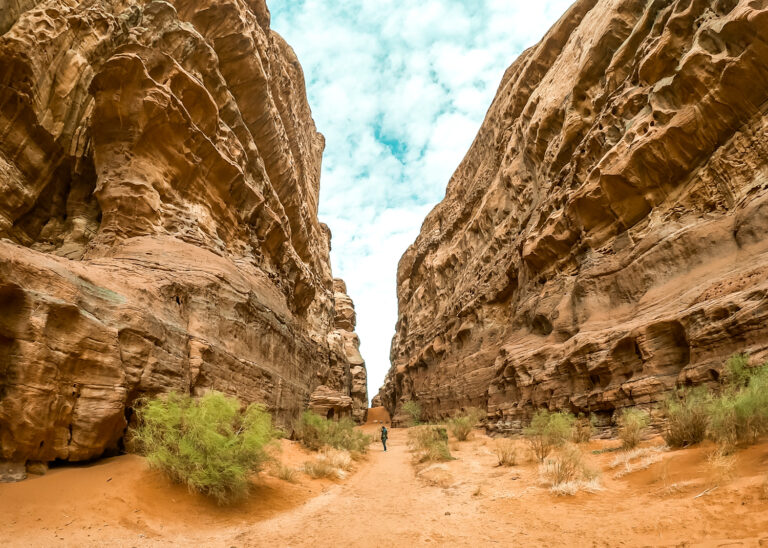
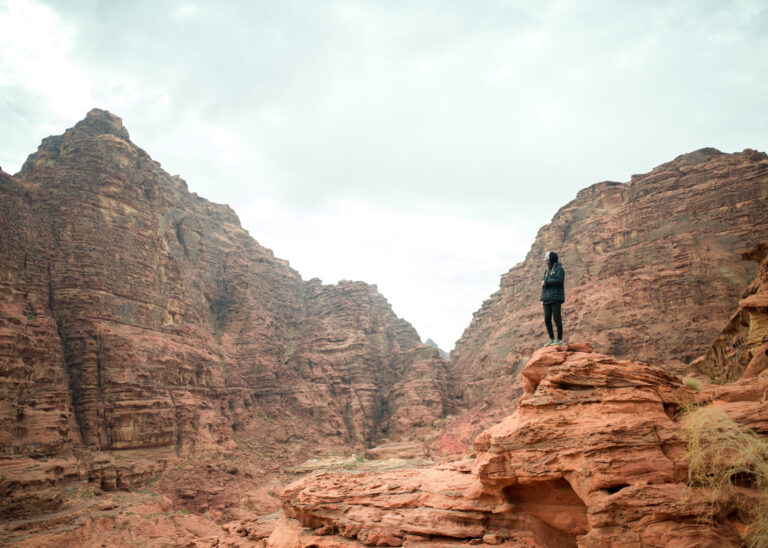
Fun fact: there is a dam in the canyon that was built over 2000 year ago so that herders could collect rain water. It is still used today!
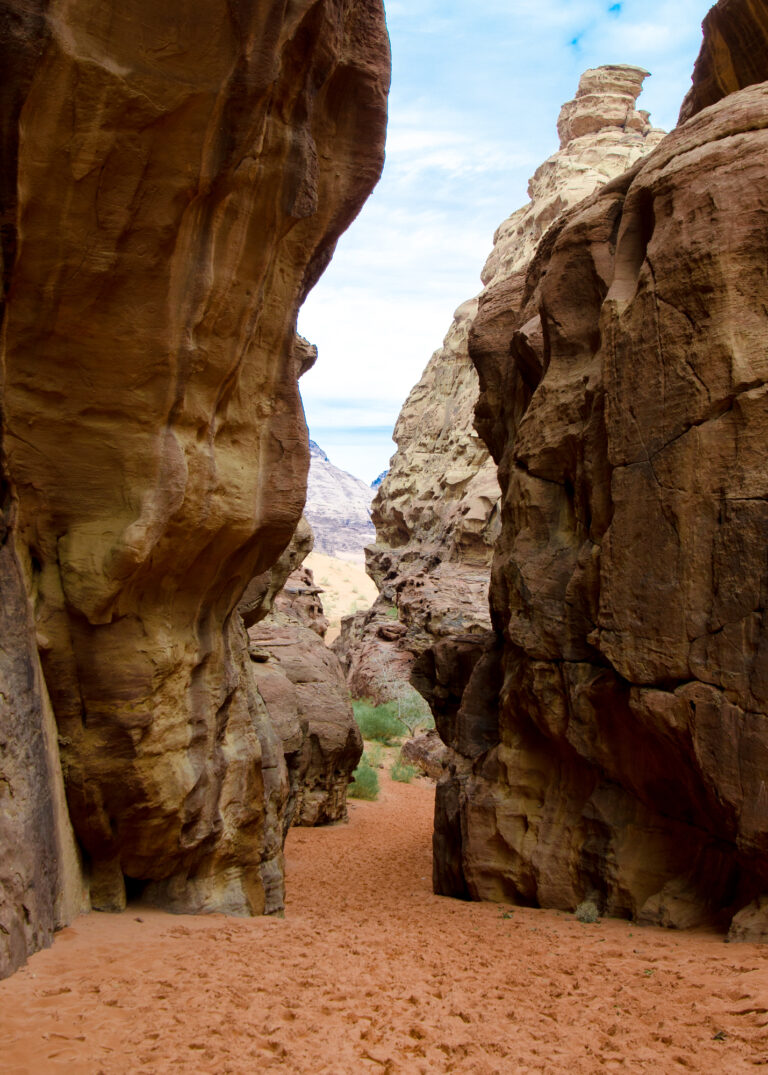
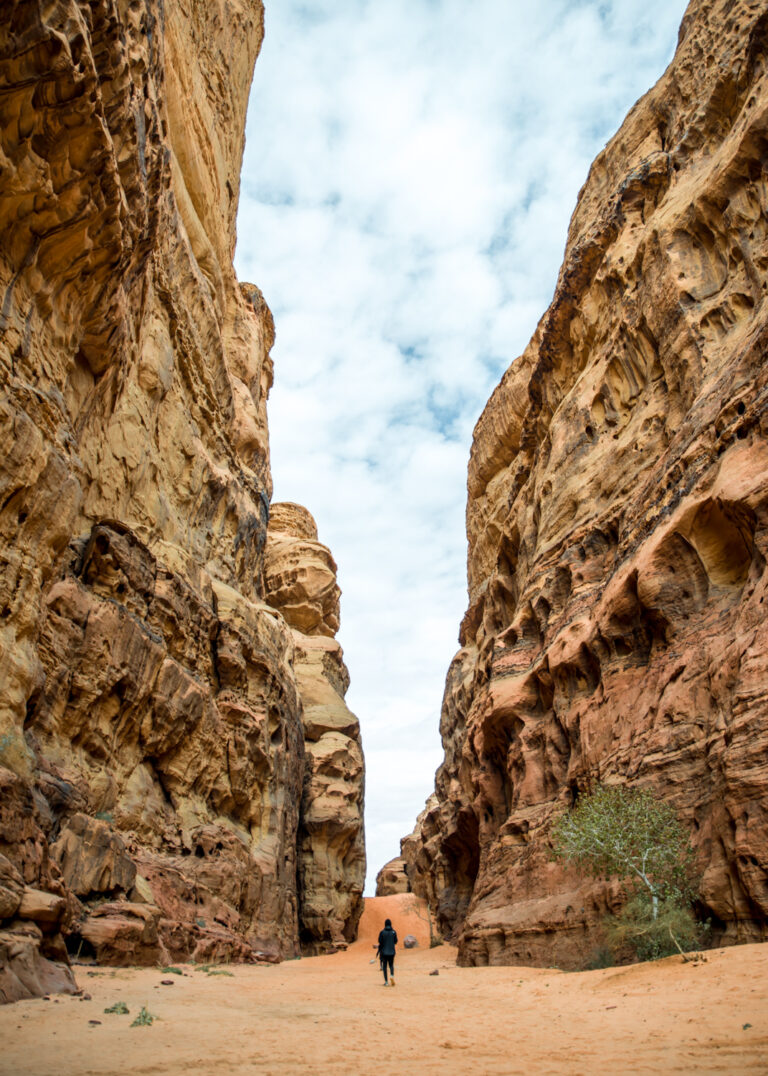
Mushroom Rock
Mushroom Rock is a really curious natural phenomenon and I left wondering how on earth it could shaped like that. I mean, obviously it’s from millions of years of wind, sand and rain erosion… but damn, nature is a wild thing!
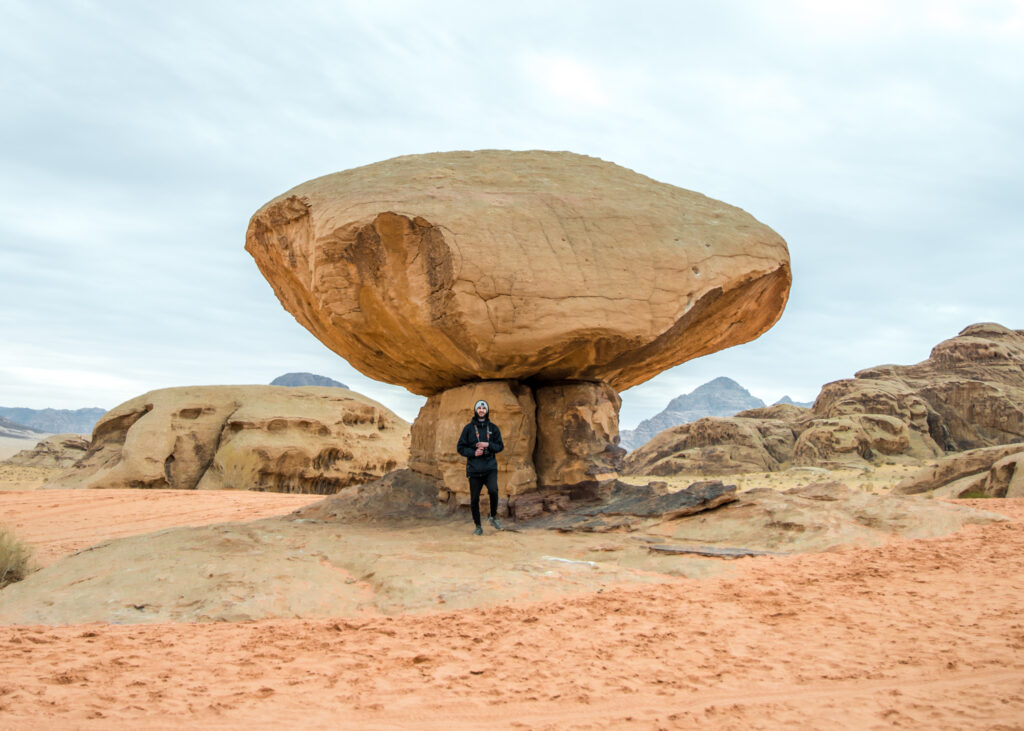
It doesn’t look that big as you approach or even in photographs, but once you’re in front of it its sheer size is quite striking.
Desert Lunch
The guide lit a fire (which is the first thing they do in this culture… always) and cooked an array vegetables over it before adding tomato purée and water to make some lovely filled pittas for lunch.
While they were doing their thing I went for a walk to chat to some camels and have a look around the valley.
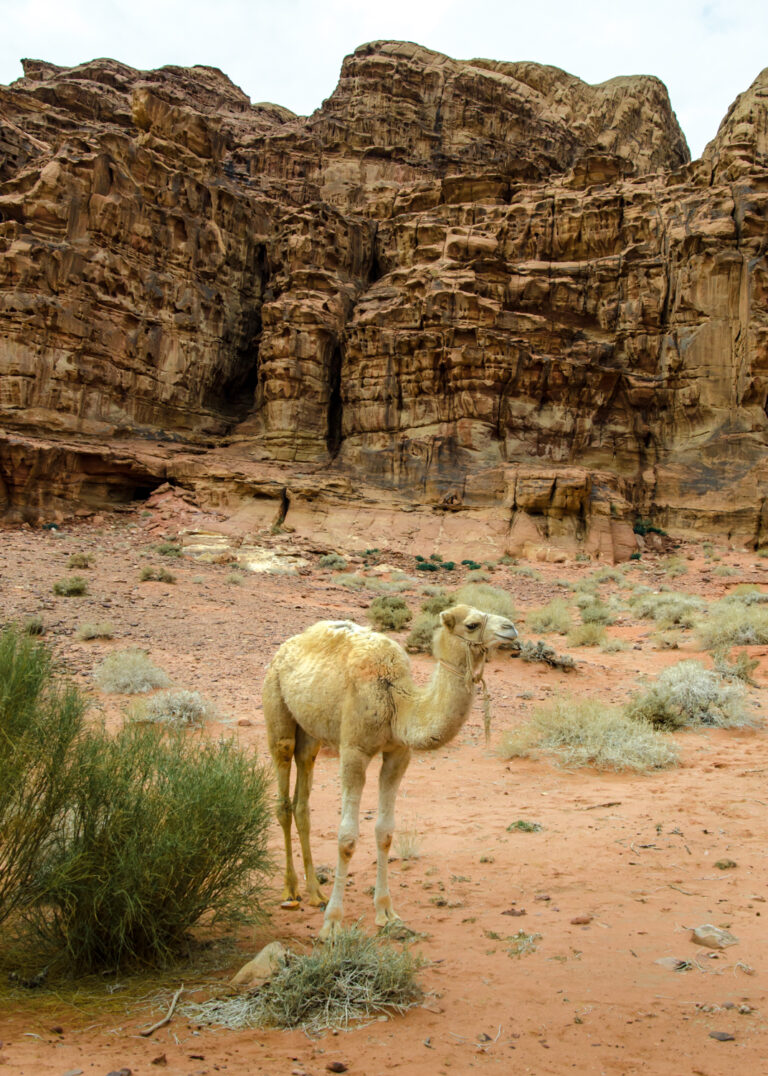
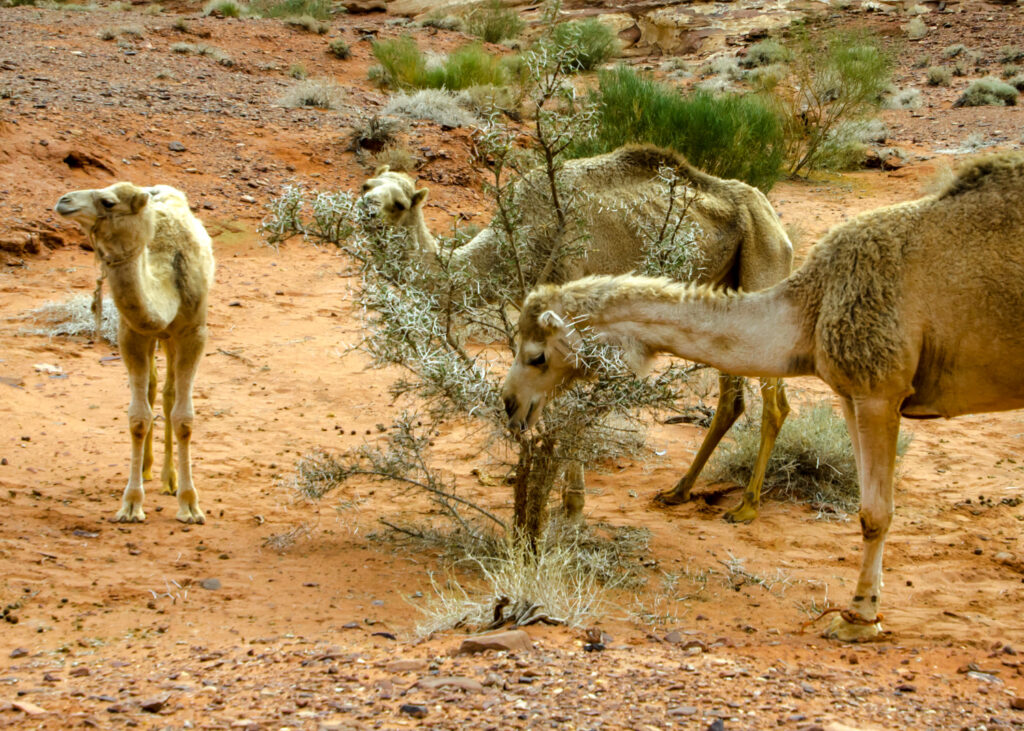
Photo stops on the way back to camp
After lunch we made a few stops at other locations whilst heading in the general direction of camp.
Everywhere you turn in Wadi Rum there is something that will blow your mind, and natural landscapes will never fail to amaze me. Safe to say, I was fully in my element here!
I’m not sure of the names of any of these locations unfortunately, but every single one was simply staggering. The power of mother nature is awesome.
Here’s a collection of photos from the rest of the day:
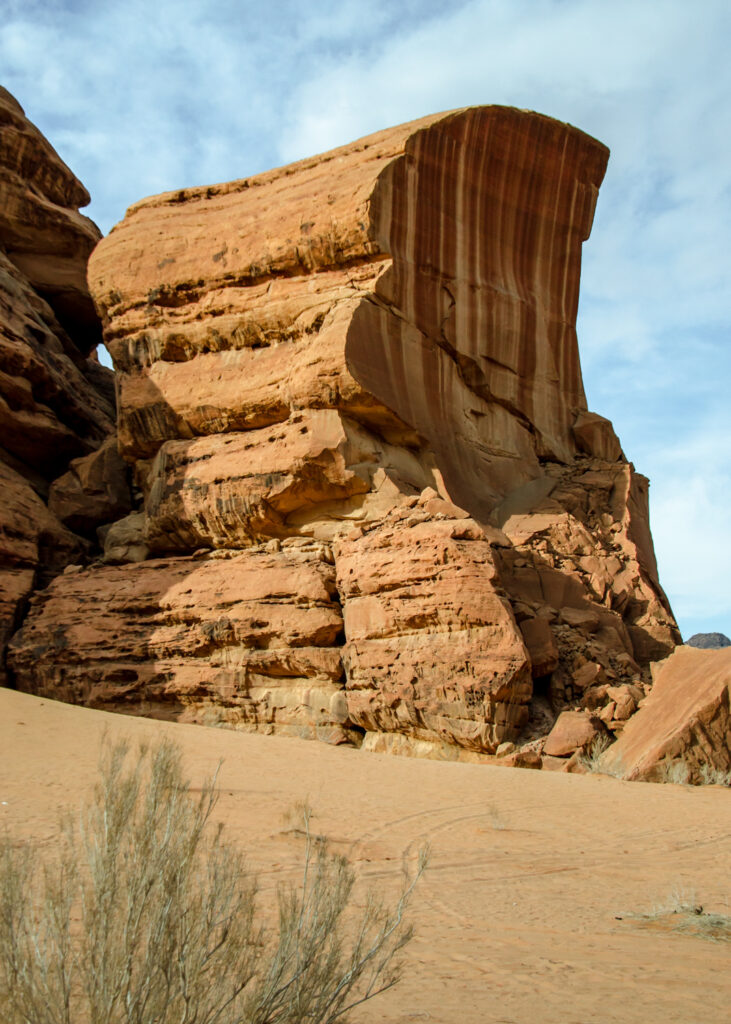
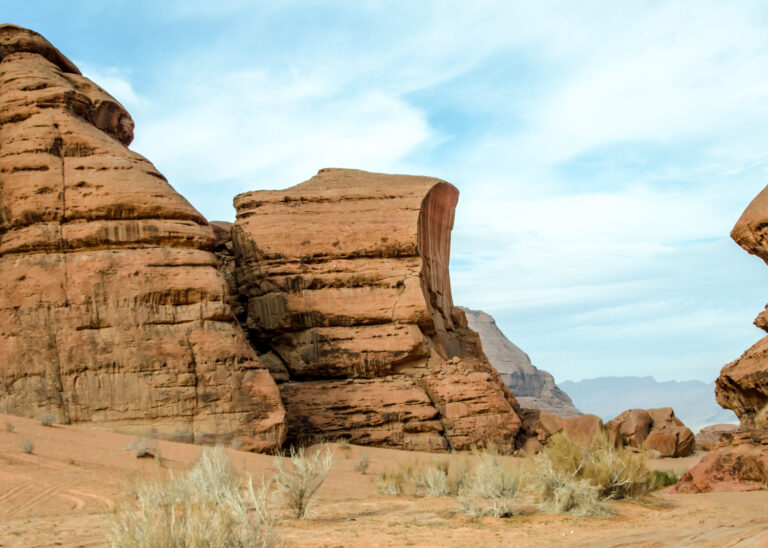
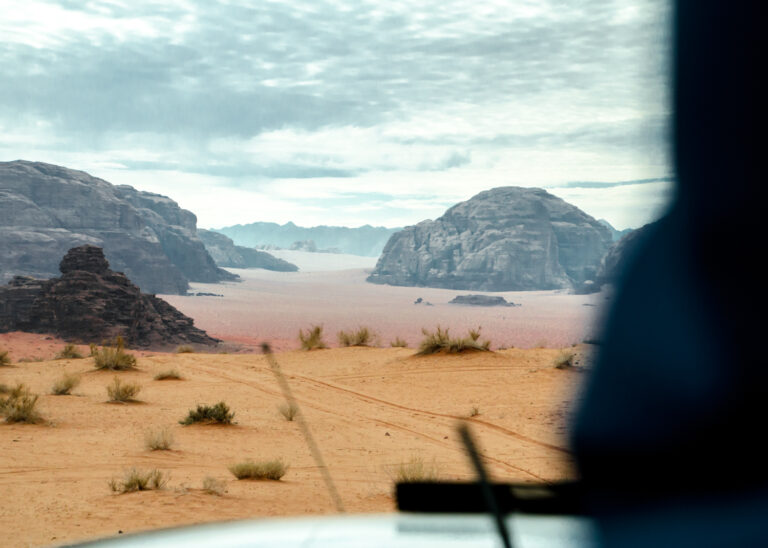
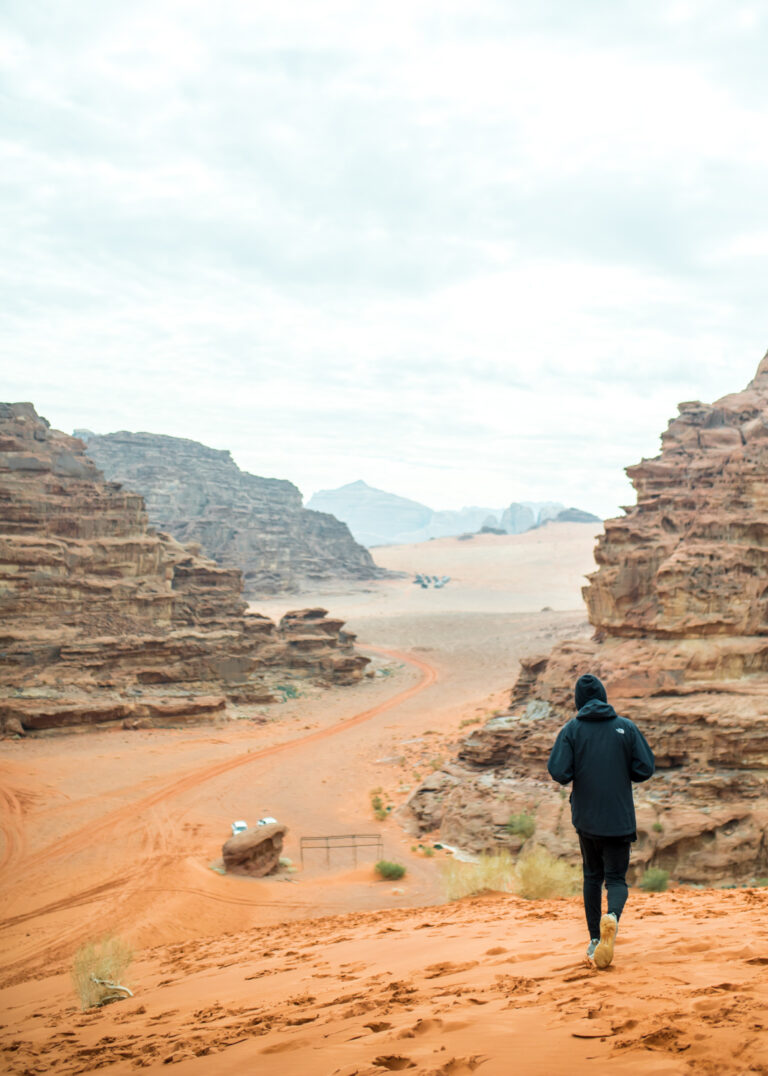
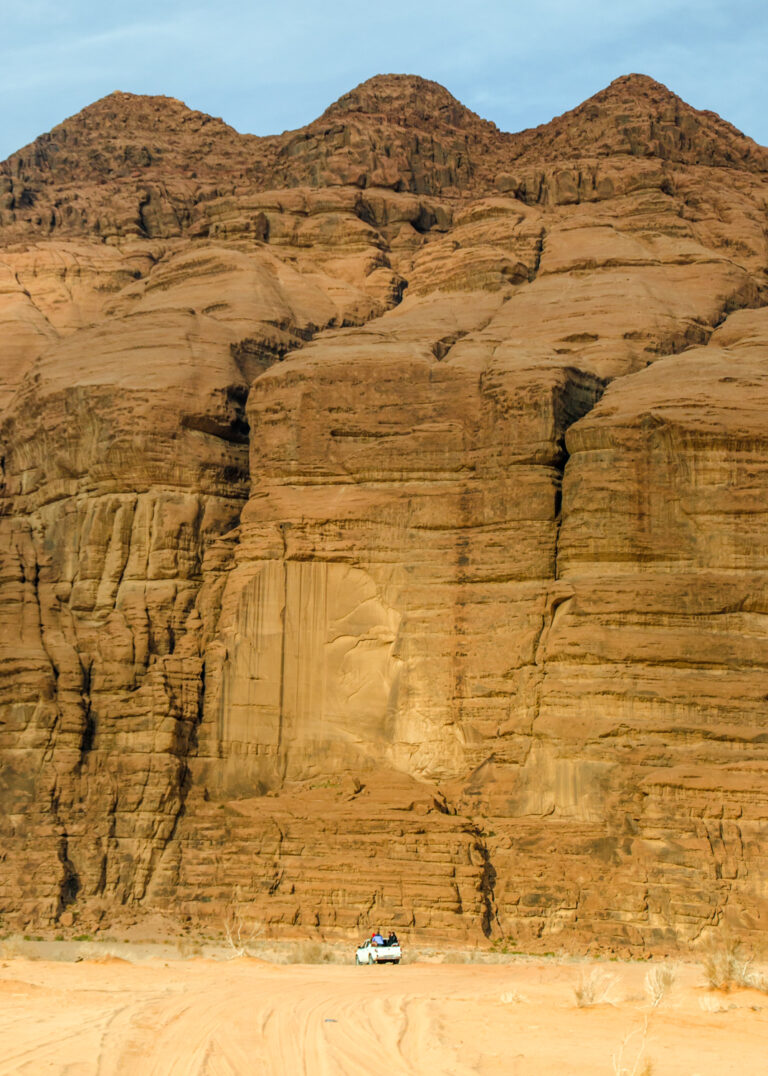
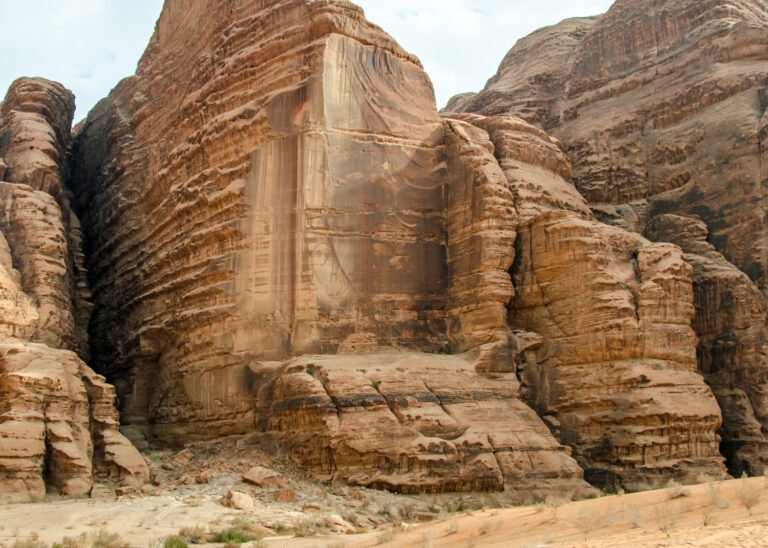
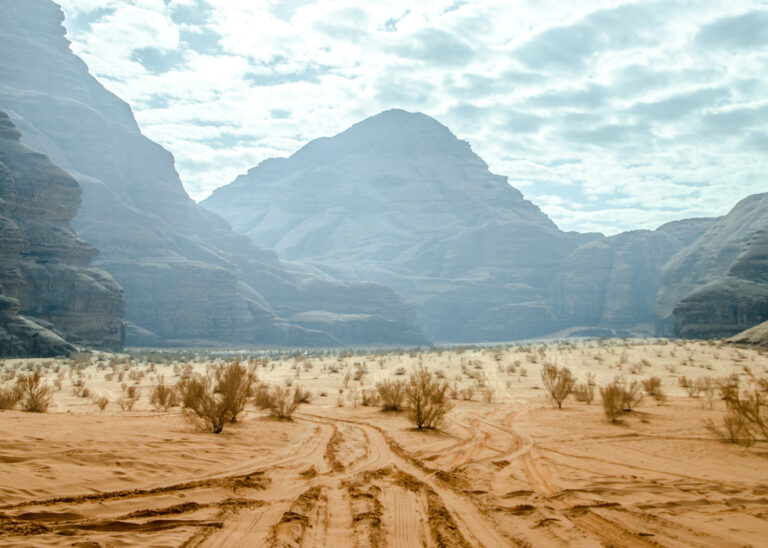
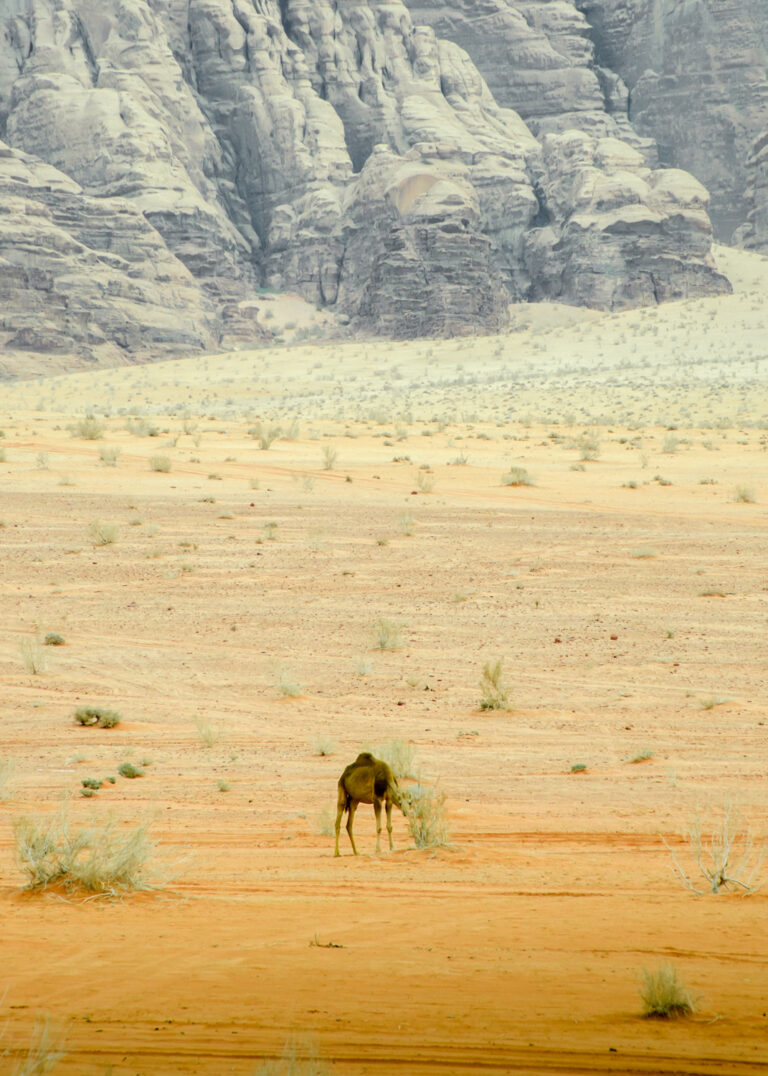
Once we got back to camp we said goodbye to Ali and the gang before his brother Muhammad returned us to the visitor centre to retrieve our car and head onward to Aqaba.
Just before heading off I made an attempt to give Ali a small tip as a way of saying thank you for everything he had done for us, but he point blank refused to accept it. In fact, he seemed a little offended that I even tried!
Admirable stuff from one of the most humble and genuine characters I’ve ever met.
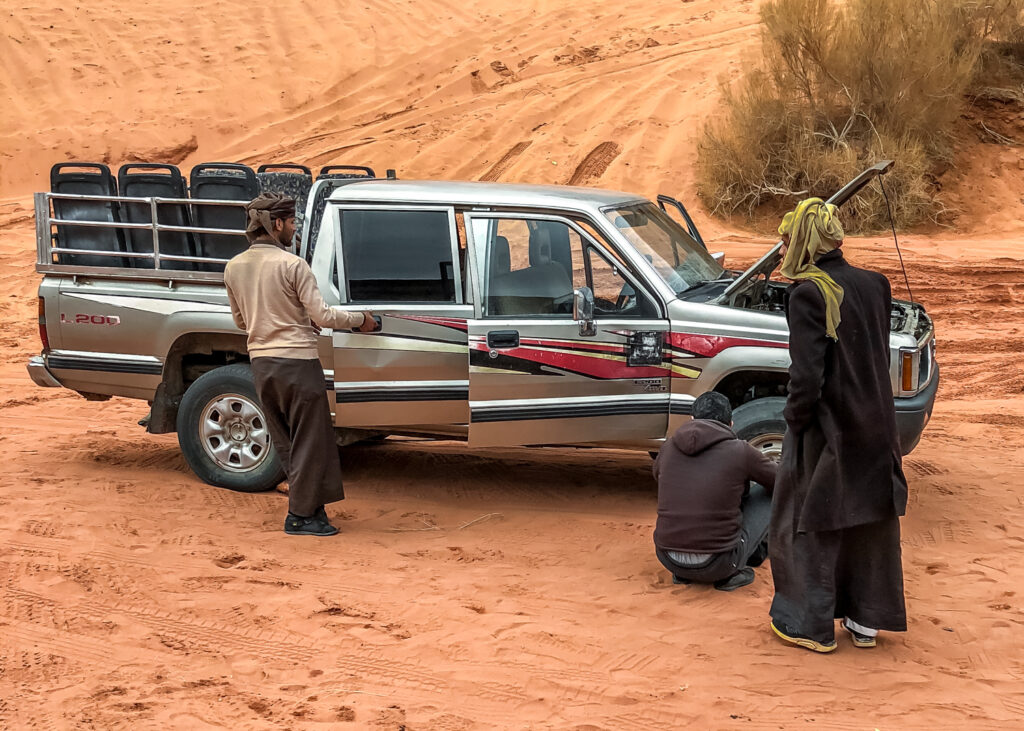
Closing thoughts
It wasn’t until I got back to the car and I thought over what had happened the last 24 hours that I realised just how awesome the whole experience had been and how fortunate I felt.
The hospitality and welcoming feeling I got from the people made it an experience I’ll never forget, let alone the natural beauty of the desert blowing my mind.
Ali and the troops went out of their way to make our stay as amazing as possible and everything from the food, information, social moments and general vibes were on point throughout.
After a 65km drive to Aqaba I stayed the night in a dorm that Ali’s friend owned called Family House Hostel as a way of saying thanks to him. It wouldn’t of been my first choice, but since we didn’t pay for a single thing in the desert I felt we owed it to him to give something back, one way or another.
Where to stay in Wadi Rum
There are loads of accommodation choices in the Wadi Rum Village suitable for all budgets. From there you can organise day trips into the desert. Use Booking.com to find somewhere you like.
Alternatively, get the full desert experience like I did and book an overnight tour of Wadi Rum which will include your accommodation and an experience you’ll never forget.
Best tours of Wadi Rum

Thank you for reading this travel guide – I hope you found it helpful! Feel free to leave a comment below if you have any questions and I’ll get back to you as soon as possible
Happy travelling!
HELPFUL RESOURCES FOR PLANNING YOUR TRIP
Accommodation: Booking.com, Hostelworld
Tours: GetYourGuide, Viator, Klook, TripAdvisor
Transport: 12Go, Omio, Trip.com, Rome2Rio
WHO IN THE WORLD IS JAMES?
Click below to learn more about my story, including 5 random facts about me, some travel FAQ’s and my entire travel history.
No related posts.

